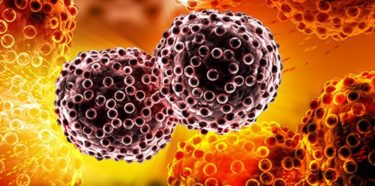Oncology is a branch of medicine specialized in the diagnosis and the treatment of cancer. It also investigates cancer development and risk factors, cancer-related statistics and prevention methods. Oncologists are doctors specialized in the oncology field. They focus on the diagnosis of cancer, its staging, its treatment and cancer patient care. Oncology is a constantly changing and developing medical field. Studies on many topics such as cancer cell biology, chemotherapy treatment methods, optimal palliative care and pain treatment continues.
Table of Contents
What is oncology?
The term oncology is a combination of two Greek words. “Onkos” means lump, mass and tumor and “logy” means “science” and “field of study.” The word literally means “the study of tumors.” Oncology has sub-branches such as preventive oncology, medical oncology, radiation oncology, surgical oncology and palliative care.
Medical oncology
Medical oncology is an oncology branch that utilizes many therapeutic interventions such as chemotherapy, hormonal therapy and immunotherapy in the treatment of cancer. Every stage of cancer is the subject of the medical oncology.
Radiation oncology
Radiation oncology, also known as radiotherapy (radiation therapy), is an approach to cancer treatment which uses high-energy radiation focused on eliminating cancer cells or stopping their growth. (1)
What are oncological disorders?
Oncology manages the diagnosis, treatment and care process of every type of cancer. Among the important diseases in the field of oncology are breast, lung, skin, gastric, bladder, thyroid cancers, gynecological, hematological and colorectal cancers and brain tumors.
Symptoms of oncological disorders
Common symptoms indicating cancer: (2)
- Fatigue
- Weight loss
- Idiopathic anemia
- Idiopathic fever or pain
- A new lump
- A mass or swelling
- Change in toilet routines, blood in the stool
- A wound that does not heal
- Unusual bleeding
- Difficulty in swallowing
- A new mole in the body or change of shape in an old mole
- Cough or hoarseness that do not go away
How is an oncology examination performed?
One of the important diagnostic methods of oncology is the medical history of a patient. An oncologist may perform a physical examination to look for signs and symptoms, and find abnormalities that may indicate cancer, and may ask for diagnostic tests such as blood and urinary test, and radiological and pathological tests.
Oncology tests
Biopsy is the method of taking a tissue from the tumor and examining it with a microscope. It is one of the most common diagnostics tests used in the field of oncology. Blood tests for biomarkers or tumor markers are commonly used in oncology.
Elevation of tumor marker levels in a blood test may indicate cancer. Bone marrow aspiration or biopsy, radiological imaging tests and nuclear medicine methods are among the diagnostic tests of oncology.
Imaging tests
- Endoscopy
- X-Ray
- CT (Computerized Tomography) scan
- MRI
- Single Photon Emission Computerized Tomography (SPECT) scan
- Positron Emission Tomography (PET) scan
- Scintigraphy
- Nuclear medicine methods
- Bone scans
- Ultrasound and other radiological methods (3)
Tests of the oncology department
Complete blood count (CBC)
Complete blood count measures the amount of blood cell types in the blood. It helps diagnose some type of blood cancers such as leukemia and lymphoma. It may indicate whether the cancer spread to the bone marrow and whether the patient’s body can handle a treatment.
Cancer cells, proteins or other substances produced by cancer may be observed in blood samples. It also provides the insight of how healthy the organs are working and whether they are affected by the cancer. (4)
CT (Computerized Tomography) scan
A CT scan provides a detailed, three-dimensional imaging of the internal body structures using X-rays taken from different angles. Tomography helps with the diagnosis and stage of a cancer, treatment plan, process and patient follow-up. Sometimes, a special dye called contrast agent is injected to the body to obtain more detailed images before scanning. (5)
Biopsy
Your doctor may ask for a biopsy if something suspicious is found during a physical examination or other test results. During a biopsy, tissue samples are taken from the tumor either surgically or with a needle. The sample is examined by a pathologist.
Diagnosis can be made if the microscopic and biochemical properties of the tissue have the characteristic of a particular type of cancer. Biopsy is often the primary diagnostic tool in determining the cancer type. (6)
What does an oncologist do?
An oncologist is a doctor specialized in the diagnosis of a cancer, its staging and its treatment. An oncologist:
- Explains the patient the cancer diagnosis and its stage,
- Informs the patient about his/her condition and treatment process, explains all treatment options and the preferred option, helps manage the side effects of treatment,
- Works with different branches of medicine in the treatment process,
- May consult a board of different medical experts in case of a new or difficult-to-treat type of cancer,
- Follows-up the patient’s relapse (recurring of the disease) and remission (intervals without symptoms) phases after the initial treatment is completed,
- Is responsible for palliative or symptomatic care of the patient in the last stage of cancer,
- Studies in the field of oncology contribute to health education, clinical education and ethics fields.
Types of oncologists
Oncologists may specialize in different fields of oncology:
Medical oncologists
They use treatment methods and medicines such as chemotherapy, hormonal therapy, and immunotherapy to treat patients with cancer. They also utilize other forms of targeted treatments.
Medical oncologists help their patients manage side effects, and they help monitor and maintain the general state of health. They also coordinate treatments with other specialists. Medical oncologists follow up with their patients after a treatment is complete.
Radiation oncologists
They use high-energy photon beams to target and eliminate cancer cells. Almost half of all cancer patients have radiation treatments as a part of their cancer care.
Surgical oncologists
They often perform a biopsy. When necessary, surgically removes tumors and the tissue surrounding a tumor.
Some oncologists are specialized in certain parts of the body:
Gynecologic oncologists
Gynecologic oncologists specialize in treating cancers that affect women, such as ovarian, cervical, uterine, vaginal and vulvar cancers, but they also often treat complicated gynecological conditions that are not cancerous like endometriosis and fibroid tumors.
Hematologists
They help diagnose and treat blood cancers such as leukemia, lymphoma, and myeloma. They may also treat blood disorders that are not cancer, like sickle cell anemia and hemophilia.
Pediatric oncologists
They are specialized in treating the cancers in children.An important part of their work is to educate families whose children undergo a treatment for cancer.
Besides the oncologists specialized in the body parts such as the head and neck, or parts of the gastrointestinal tract, there are oncologists specialized in certain types of cancers, such as breast cancer or skin cancer.
How do oncologists treat diseases?
One of the most important duties of an oncologist after a diagnosis is to help a newly diagnosed patient understand the disease and the stages of the disease. Staging is the process of determining main cancer site, whether it has metastasis or how bad the metastasis is, where it spreads and whether it affects different parts of the body. Oncologists evaluate staging, treatment, chance of recovery and possibility of relapse.
There is a unique type of cancer for each organ and each cancer differs in textural type. Therefore, an oncologist plans a treatment based on detailed pathology reports to design a customized treatment for the cause of the cancer.
Depending on the type, stage, and location of the cancer, a treatment team is established including oncologists from at least two or three different branches to provide diagnosis, treatment and care to a patient. This team may also include a pathologist, diagnostic radiologist, oncology nurse and an oncology social worker.
Depending on the needs of a patient, social workers, psychologists, occupational therapists, doctors with different specialties such as physiotherapists may also be included in the treatment team.
Oncological treatment methods
Surgical methods
Surgical intervention is usually the treatment method before the spread of a cancer. Complete removal of a tumor is among the best treatments. An oncologist may also remove cancer-affected body part completely or partially, as in breast cancer. Surgery is a method used mostly in breast, intestine, skin and lung cancers. (7)
Chemotherapy
If a tumor spreads or cannot be removed surgically, chemotherapy is preferred. Chemotherapy is a drug treatment administered to eliminate rapidly growing cells in the body, such as cancer cells. These intravenous or oral drugs are suitable for cancer types spread in the body, as they reach almost every part of the body.
Chemotherapy drugs may have many side effects such as hair loss, nausea, asthenia and susceptibility to infections. The chemotherapy treatment process is carefully monitored by an oncology team. (8)
Radiotherapy
In radiotherapy, high-dose radiation is used to eliminate the cancer cells. It is coordinated by a radiotherapist. Radiotherapy may be either used alone or combined with chemotherapy or surgery.
Other methods
Oncologists benefit from different methods in cancer treatment besides the methods mentioned above. These include:
- Hormonal therapy
- Monoclonal antibody therapy
- Cancer vaccines and immunotherapy
- Stem cell transplants in the treatment of cancers originating from the blood and the bone marrow
- Minimally invasive (interventional) treatments to destroy a tumor
- Palliative care
- Treatment of pain and symptoms
How to prevent cancer?
Simple changes in routine may help reduce the risk of cancer: (9)
- Quit smoking,
- Eat plenty of fresh fruits and vegetables,
- Maintain healthy body weight,
- Exercise regularly,
- Lower alcohol consumption,
- Limit processed meats,
- Protect yourself from harmful sunrays.
- Get vaccinated against the viruses that may cause cancer such as Hepatitis B and HPV.
- Avoid sexual intercourse without protection.
- Get regular check-up.
When to see an oncologist?
Your doctor may refer you to an oncologist if you are diagnosed with a cancer by a different specialist or if the specialist suspects cancer. As a patient, you can get a second opinion from other doctors or medical teams at any time you like.
Are oncological diseases fatal?
Although all cancers occur due to uncontrolled growth of abnormal cells, cancers occurring in different parts of the body act and respond differently to treatment.
While some types of cancer can be fatal even though they are diagnosed at early stages, some cancer cells may mutate and gain resistance to drugs. Nevertheless, 60% of cancer types can be treated.
Oncology hospitals and oncology centers
It is crucial to guide cancer patients and treat them in centers working with a multidisciplinary structure. The coordination of specialists in different fields in cancer treatment such as surgical oncology, medical oncologist, radiation oncologist, pathologist, nuclear medicine specialist, radiologist and psychiatrist is essential.
Oncology hospitals and centers should have personalized treatment methods and tools for early diagnosis. They should use advanced technology in the diagnosis and treatment process.




